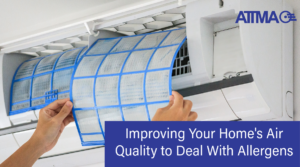In this 6-part series, Chris Milsom (CM), Digital Marketing and Membership Coordinator sat down with Paul Carling (PC), Technical Manager of ATTMA to discuss a range of topics to do with Air Testing.
In this section we spoke about Common Air leakage Paths
CM – Hi Paul, thanks for sitting down with me. Can you tell me more about common air leakage paths?
PC – Hi Chris, thanks for having me. So what you have got in dwellings, it is anything to do with the plumbing. So, you’re looking at supply and waste pipes, so that’s from things like your sanitaryware, toilets and sinks. That’s your bath panels and your showers because they’re also associated with those as penetrations that can potentially go through the fabric of the building.
So, for example, your waste pipes will go to like soil stacks which might be outside or potentially could be inside, but then how is it for space? If it is internally, how has that been sealed or not? Has it been boxed in?
Non-Dwellings
For non-domestic is difficult to categorise. Other than to say generic areas, so you have your service penetrations again. Some might be more things because you’ve got typically more robust and larger and more complicated ventilation systems going on, like air conditioning units in there, so you’ve got lots of ducting going everywhere.
And then you’ll have those in and out of the building, aside from the plumbing, you might have significantly more electrics that are going on. For example, if you’ve got a building like a hospital the amount of equipment that’s in there. You can end up with these great big long runs of electrical cables going through the building to power all the devices.
You’ve got your obvious penetrations. This is for all everything windows and doors. But going back to non-dwellings, you’re looking at material changes when you move from one material to another and it’s the seal between those two materials. And you also you’re looking at junction points where you get two of potentially the same element that meet, and it’s how is the seal where they meet.
CM – Thanks Paul, that’s very helpful
Join us next week, when we will be speaking about what needs to be tested.





